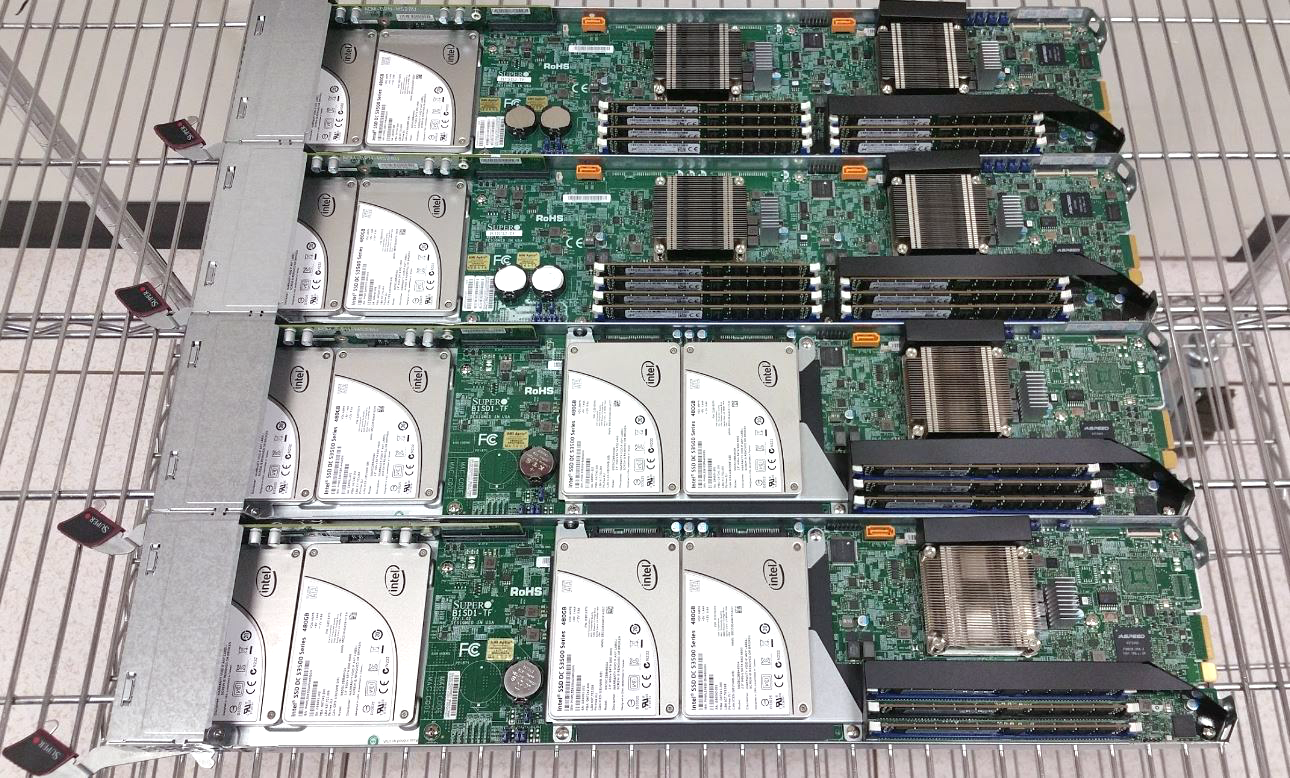The Supermicro MicroBlade system is flexible as it allows you to mix and match blades. We had access to four blades with our review unit, including two of the Xeon D dual node blades. The part numbers for these storage blades is Supermicro MBI-6218G-T41X. These blades each have two complete Intel Xeon D-1541 nodes onboard with a set of four RDIMM slots, SATA DOM slot and a SATA SSD each.
Supermicro MicroBlade Dual Xeon D Compute Node Overview
On the dual Intel Xeon D compute node, the PCB is populated with two Intel Xeon D SoC’s along with two sets of RAM slots and SATA ports. There are even two Aspeed AST2400 baseboard management controllers that provide out of band management access.

Each node can have up to 4x 32GB DDR4-2400 ECC RDIMMs for a total of 128GB. One caveat to these blades is that removing them from a chassis will take both nodes offline. Otherwise, they can be managed seperately.
Test Configuration
Our compute blades had the following configuration for each node:
- Blade: Supermicro MicroBlade MBI-6218G-T41X
- Motherboard: B1SD2-TF
- Onboard SoC: Intel Xeon D-1541
- RAM: 64GB DDR4-2400 (4x 16GB RDIMMs)
- Storage: 1x Intel DC S3500 480GB
- Chassis switch: Supermicro MBM-XEM-001 (10Gb switch with 4x 40GbE QSFP+ uplinks)
We had two of these blades identically configured in our chassis.
Supermicro MicroBlade Xeon D-1541 Performance
We have extensively covered the Supermicro MicroBlade Xeon D-1541 performance on STH (and virtually every other Xeon D part available. Here are some charts to help you gauge relative performance.
Our Linux kernel compile benchmark we use to test higher-end instances. The Intel Xeon D-1541 is a low power chip but starts to get close to older dual socket systems and large Intel Xeon E5 systems in terms of performance.
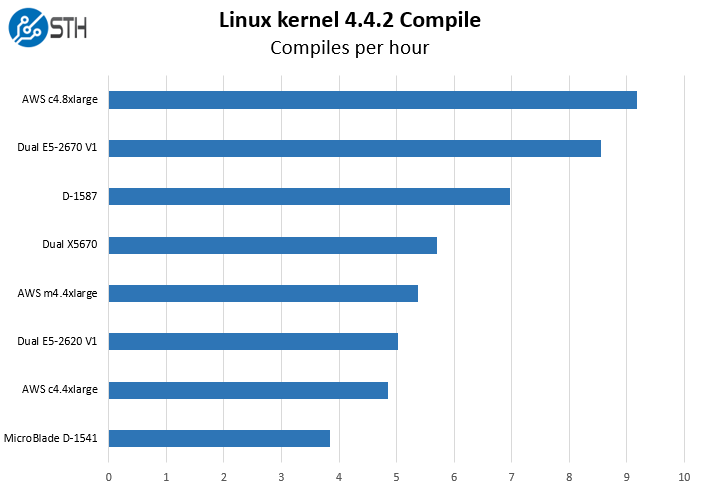
Using OpenSSL 1.0.1g we see the performance of the D-1541 to be excellent in our OpenSSL testing.
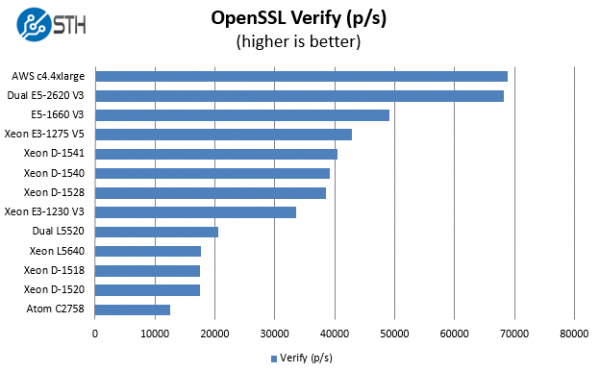
c-ray 1.1 is a benchmark similar to a ray tracing compute workload. Here we can see the 45w TDP part exceed the performance of older generation dual socket (Xeon L5520) systems.
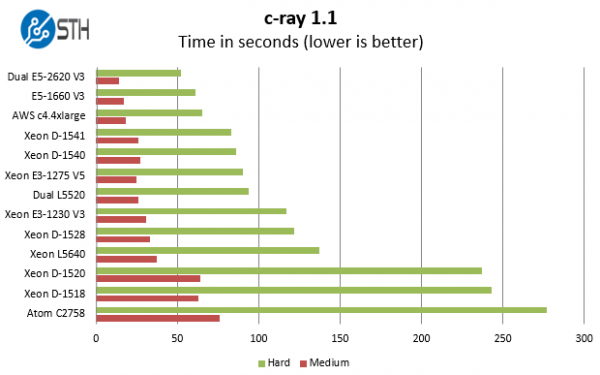
7-zip is a widely used compression tool and the built-in benchmarking feature allows us to benchmark a compression workload.
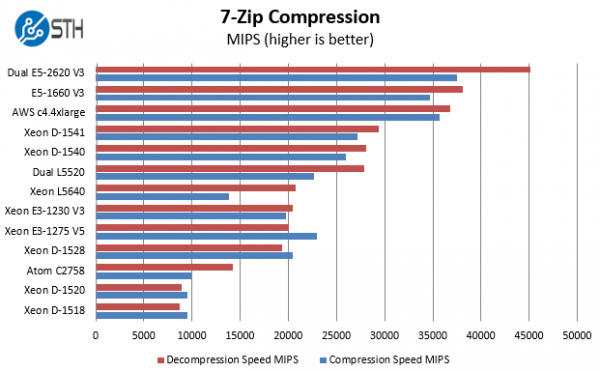
The Intel Xeon D-1541 found in the Supermicro MicroBlade nodes performs well here as well.
Competitive View
There are a number of micro server solutions on the market. We utilize three different data centers in the US for STH and our labs, and we get to spend time in many others. These facilities are colocation facilities where various organizations lease power, bandwidth and space to house their gear. We see the MicroBlade everywhere. While many of these we believe are the C2750/ C2550 MicroBlades, this is a popular platform. Beyond simply seeing these nodes in the data centers we view, the more we talk to system integrators and even teams at companies like Mirantis, the MicroBlade platform is one that we hear a lot of buzz about outside of Supermicro.
From a competitive standpoint, the fact that Supermicro uses a blade form factor designed for 1-4 nodes means that this storage blade is one of the denser solutions around. We have HPE Moonshot m300 nodes in our lab and those nodes can only handle one 2.5″ SATA SSD and 32GB of RAM. If you are building an OpenStack or similar cluster having the ability to add in-chassis storage nodes is a great feature. HPE did make prototype storage nodes, but we have not heard of these working in production systems. The nodes only have space for 2x 2.5″ SATA disks due to the Moonshot cartridge’s space limitations.
The Supermicro MicroBlade 3U system is quite complex. As such we have a multi-part article for the review. See the other portions of the review here:
- Supermicro MicroBlade Review Part 1: Overview
- Supermicro MicroBlade Review Part 2: Management
- Supermicro MicroBlade Review Part 3: Networking
- Supermicro MicroBlade Review Part 4: Dual node Xeon D compute blade
- Supermicro MicroBlade Review Part 5: Xeon D storage Blade
Check out the other parts of this review to explore more aspects of the system.

